Great Astronomers by Robert Stawell Ball (uplifting novels .txt) 📕
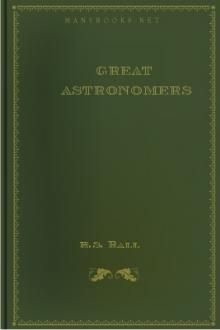
- Author: Robert Stawell Ball
- Performer: -
Book online «Great Astronomers by Robert Stawell Ball (uplifting novels .txt) 📕». Author Robert Stawell Ball
The next event in the history of the Observatory was the issue of
Letters Patent (32 Geo. III., A.D 1792), in which it is recited
that “We grant and ordain that there shall be forever hereafter a
Professor of Astronomy, on the foundation of Dr. Andrews, to be
called and known by the name of the Royal Astronomer of Ireland.”
The letters prescribe the various duties of the astronomer and
the mode of his election. They lay down regulations as to the
conduct of the astronomical work, and as to the choice of an
assistant. They direct that the Provost and the Senior Fellows
shall make a thorough inspection of the observatory once every
year in June or July; and this duty was first undertaken on the
5th of July, 1792. It may be noted that the date on which the
celebration of the tercentenary of the University was held happens
to coincide with the centenary of the first visitation of the
observatory. The visitors on the first occasion were A. Murray,
Matthew Young, George Hall, and John Barrett. They record that
they find the buildings, books and instruments in good condition;
but the chief feature in this report, as well as in many which
followed it, related to a circumstance to which we have not yet
referred.
In the original equipment of the observatory, Ussher, with the
natural ambition of a founder, desired to place in it a telescope
of more magnificent proportions than could be found anywhere else.
The Board gave a spirited support to this enterprise, and
negotiations were entered into with the most eminent instrument-maker of those days. This was Jesse Ramsden (1735-1800), famous
as the improver of the sextant, as the constructor of the great
theodolite used by General Roy in the English Survey, and as the
inventor of the dividing engine for graduating astronomical
instruments. Ramsden had built for Sir George Schuckburgh the
largest and most perfect equatorial ever attempted. He
had constructed mural quadrants for Padua and Verona, which
elicited the wonder of astronomers when Dr. Maskelyne declared he
could detect no error in their graduation so large as two seconds
and a half. But Ramsden maintained that even better results would
be obtained by superseding the entire quadrant by the circle. He
obtained the means of testing this prediction when he completed a
superb circle for Palermo of five feet diameter. Finding his
anticipations were realised, he desired to apply the same
principles on a still grander scale. Ramsden was in this mood
when he met with Dr. Ussher. The enthusiasm of the astronomer and
the instrument-maker communicated itself to the Board, and a
tremendous circle, to be ten feet in diameter, was forthwith
projected.
Projected, but never carried out. After Ramsden had to some
extent completed a 10-foot circle, he found such difficulties that
he tried a 9-foot, and this again he discarded for an 8-foot,
which was ultimately accomplished, though not entirely by himself.
Notwithstanding the contraction from the vast proportions
originally designed, the completed instrument must still be
regarded as a colossal piece of astronomical workmanship. Even
at this day I do not know that any other observatory can show a
circle eight feet in diameter graduated all round.
I think it is Professor Piazzi Smith who tells us how grateful he
was to find a large telescope he had ordered finished by the
opticians on the very day they had promised it. The day was
perfectly correct; it was only the year that was wrong. A
somewhat remarkable experience in this direction is chronicled by
the early reports of the visitors to Dunsink Observatory. I
cannot find the date on which the great circle was ordered from
Ramsden, but it is fixed with sufficient precision by an allusion
in Ussher’s paper to the Royal Irish Academy, which shows that by
the 13th June, 1785, the order had been given, but that the
abandonment of the 10-foot scale had not then been contemplated.
It was reasonable that the board should allow Ramsden ample time
for the completion of a work at once so elaborate and so novel.
It could not have been finished in a year, nor would there have
been much reason for complaint if the maker had found he
required two or even three years more.
Seven years gone, and still no telescope, was the condition in
which the Board found matters at their first visitation in 1792.
They had, however, assurances from Ramsden that the instrument
would be completed within the year; but, alas for such promises,
another seven years rolled on, and in 1799 the place for the great
circle was still vacant at Dunsink. Ramsden had fallen into bad
health, and the Board considerately directed that “inquiries
should be made.” Next year there was still no progress, so the
Board were roused to threaten Ramsden with a suit at law; but
the menace was never executed, for the malady of the great
optician grew worse, and he died that year.
Affairs had now assumed a critical aspect, for the college had
advanced much money to Ramsden during these fifteen years, and the
instrument was still unfinished. An appeal was made by the
Provost to Dr. Maskelyne, the Astronomer Royal of England, for his
advice and kindly offices in this emergency. Maskelyne responds—
in terms calculated to allay the anxiety of the Bursar—“Mr.
Ramsden has left property behind him, and the College can be in no
danger of losing both their money and the instrument.” The
business of Ramsden was then undertaken by Berge, who proceeded to
finish the circle quite as deliberately as his predecessor. After
four years Berge promised the instrument in the following August,
but it did not come. Two years later (1806) the professor
complains that he can get no answer from Berge. In 1807, it is
stated that Berge will send the telescope in a month. He did not;
but in the next year (1808), about twenty-three years after the
great circle was ordered, it was erected at Dunsink, where it is
still to be seen.
The following circumstances have been authenticated by the
signatures of Provosts, Proctors, Bursars, and other College
dignitaries:—In 1793 the Board ordered two of the clocks at the
observatory to be sent to Mr. Crosthwaite for repairs. Seven
years later, in 1800, Mr. Crosthwaite was asked if the clocks
were ready. This impatience was clearly unreasonable, for even in
four more years, 1804, we find the two clocks were still in hand.
Two years later, in 1806, the Board determined to take vigorous
action by asking the Bursar to call upon Crosthwaite. This
evidently produced some effect, for in the following year, 1807,
the Professor had no doubt that the clocks would be speedily
returned. After eight years more, in 1815, one of the clocks was
still being repaired, and so it was in 1816, which is the last
record we have of these interesting timepieces. Astronomers are,
however, accustomed to deal with such stupendous periods in their
calculations, that even the time taken to repair a clock seems
but small in comparison.
The long tenure of the chair of Astronomy by Brinkley is
divided into two nearly equal periods by the year in which
the great circle was erected. Brinkley was eighteen years
waiting for his telescope, and he had eighteen years more in
which to use it. During the first of these periods Brinkley
devoted himself to mathematical research; during the latter he
became a celebrated astronomer. Brinkley’s mathematical labours
procured for their author some reputation as a mathematician.
They appear to be works of considerable mathematical elegance, but
not indicating any great power of original thought. Perhaps it
has been prejudicial to Brinkley’s fame in this direction, that he
was immediately followed in his chair by so mighty a genius as
William Rowan Hamilton.
After the great circle had been at last erected, Brinkley was able
to begin his astronomical work in earnest. Nor was there much
time to lose. He was already forty-five years old, a year older
than was Herschel when he commenced his immortal career at Slough.
Stimulated by the consciousness of having the command of an
instrument of unique perfection, Brinkley loftily attempted the
very highest class of astronomical research. He resolved to
measure anew with his own eye and with his own hand the constants
of aberration and of nutation. He also strove to solve that great
problem of the universe, the discovery of the distance of a fixed
star.
These were noble problems, and they were nobly attacked. But to
appraise with justice this work of Brinkley, done seventy years
ago, we must not apply to it the same criterion as we would think
right to apply to similar work were it done now. We do not any
longer use Brinkley’s constant of aberration, nor do we now think
that Brinkley’s determinations of the star distances were
reliable. But, nevertheless, his investigations exercised a
marked influence on the progress of science; they stimulated the
study of the principles on which exact measurements were to be
conducted.
Brinkley had another profession in addition to that of an
astronomer. He was a divine. When a man endeavours to pursue two
distinct occupations concurrently, it will be equally easy to
explain why his career should be successful, or why it should be
the reverse. If he succeeds, he will, of course, exemplify the
wisdom of having two strings to his bow. Should he fail, it is,
of course, because he has attempted to sit on two stools at once.
In Brinkley’s case, his two professions must be likened to the two
strings rather than to the two stools. It is true that his
practical experience of his clerical life was very slender. He
had made no attempt to combine the routine of a parish with his
labours in the observatory. Nor do we associate a special
eminence in any department of religious work with his name. If,
however, we are to measure Brinkley’s merits as a divine by the
ecclesiastical preferment which he received, his services to
theology must have rivalled his services to astronomy. Having
been raised step by step in the Church, he was at last appointed
to the See of Cloyne, in 1826, as the successor of Bishop
Berkeley.
Now, though it was permissible for the Archdeacon to be also the
Andrews Professor, yet when the Archdeacon became a Bishop, it was
understood that he should transfer his residence from the
observatory to the palace. The chair of Astronomy accordingly
became vacant. Brinkley’s subsequent career seems to have been
devoted entirely to ecclesiastical matters, and for the last ten
years of his life he did not contribute a paper to any scientific
society. Arago, after a characteristic lament that Brinkley
should have forsaken the pursuit of science for the temporal and
spiritual attractions of a bishopric, pays a tribute to the
conscientiousness of the quondam astronomer, who would not even
allow a telescope to be brought into the palace lest his mind
should be distracted from his sacred duties.
The good bishop died on the 13th September, 1835. He was buried
in the chapel of Trinity College, and a fine monument to his
memory is a familiar object at the foot of the noble old staircase
of the library. The best memorial of Brinkley is his admirable
book on the “Elements of Plane Astronomy.” It passed through many
editions in his lifetime, and even at the present day the same
work, revised first by Dr. Luby, and more recently by the Rev. Dr.
Stubbs and Dr. Brunnow, has a large and well-merited circulation.
JOHN HERSCHEL.
This illustrious son of an illustrious father was born at Slough,
near Windsor, on the 7th March, 1792. He was the only child of
Sir William Herschel, who had married somewhat late
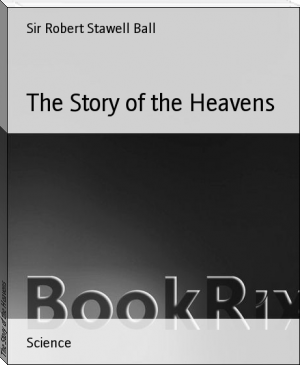
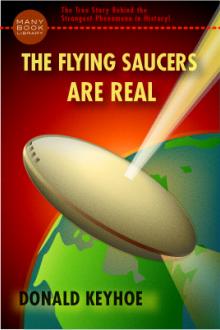

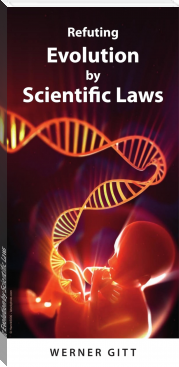
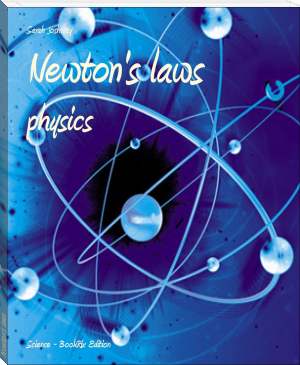
Comments (0)